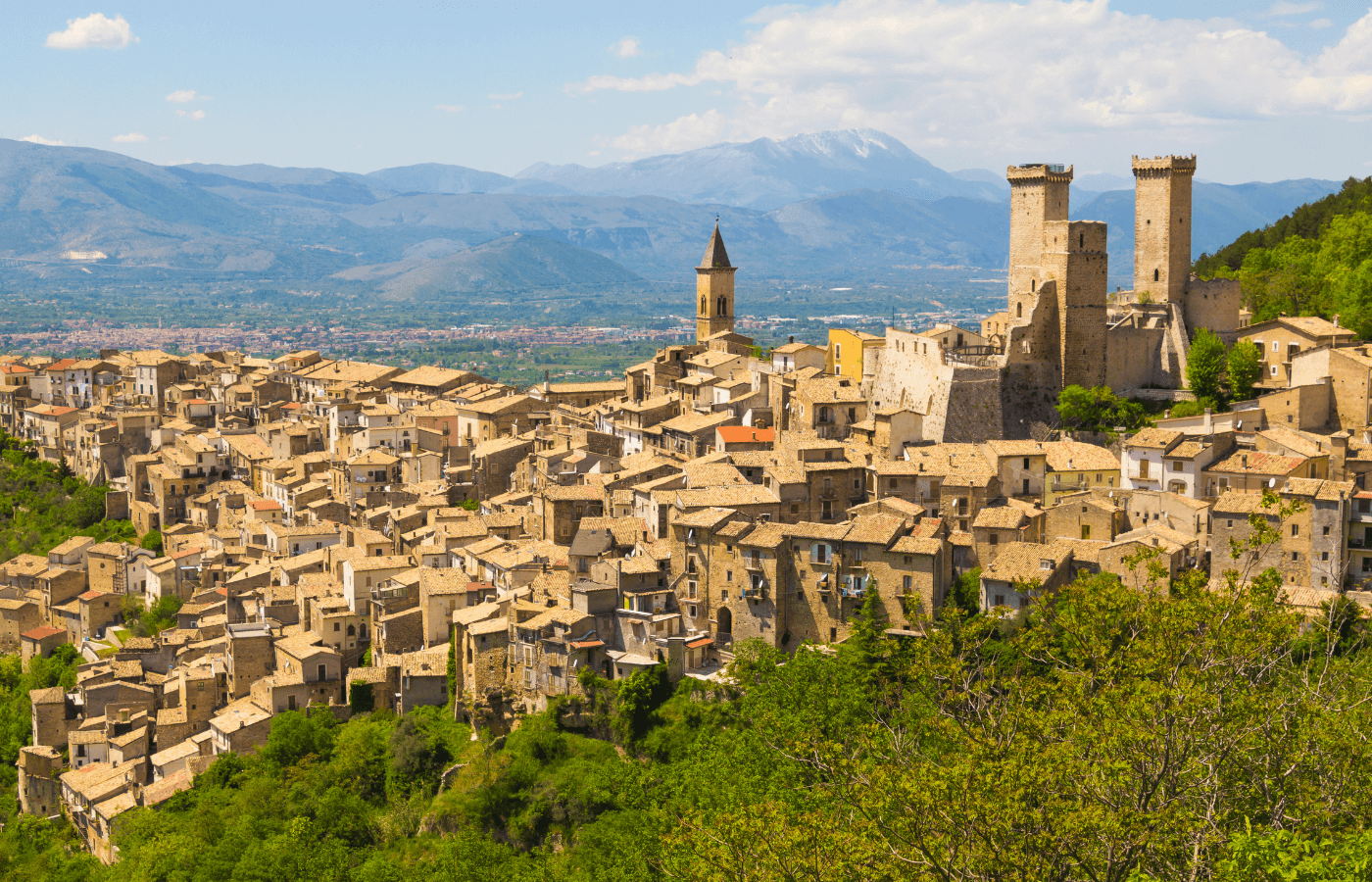The Most Charming Medieval Villages in Abruzzo
Step back in time in Abruzzo’s most enchanting historic villages.
Abruzzo might just be Italy’s best-kept secret – especially when it comes to its collection of picturesque, history-steeped medieval villages. While Tuscany and Umbria often steal the spotlight, Abruzzo’s lesser-known gems offer something truly magical: authenticity.
These villages are part of the Borghi più belli d’Italia (Most Beautiful Villages in Italy) club, a mark of exceptional cultural, historical, and architectural value. And here, unlike more touristy counterparts, you won’t find keychains and fridge magnets at every corner. Instead, expect cobblestone lanes, quiet piazzas, and breathtaking mountain backdrops.
If you’re dreaming of stepping back in time, exploring centuries-old stone houses, and savoring traditional Italian life without the crowds, then visiting these medieval villages in Abruzzo is an absolute must.
Affiliate Disclaimer: Please note that some links on this blog are affiliate links, meaning I may earn a small commission if you make a purchase through them, at no additional cost to you.
Quick List of Villages by Province:
- Palena – Chieti
- Anversa degli Abruzzi – L’Aquila
- Campli – Teramo
- Casoli – Chieti
- Castel del Monte – L’Aquila
- Castelli – Teramo
- Città Sant’Angelo – Pescara
- Civitella del Tronto – Teramo
- Guardiagrele – Chieti
- Navelli – L’Aquila
- Opi – L’Aquila
- Pacentro – L’Aquila
- Scanno – L’Aquila
- Pescocostanzo – L’Aquila
- Santo Stefano di Sessanio – L’Aquila
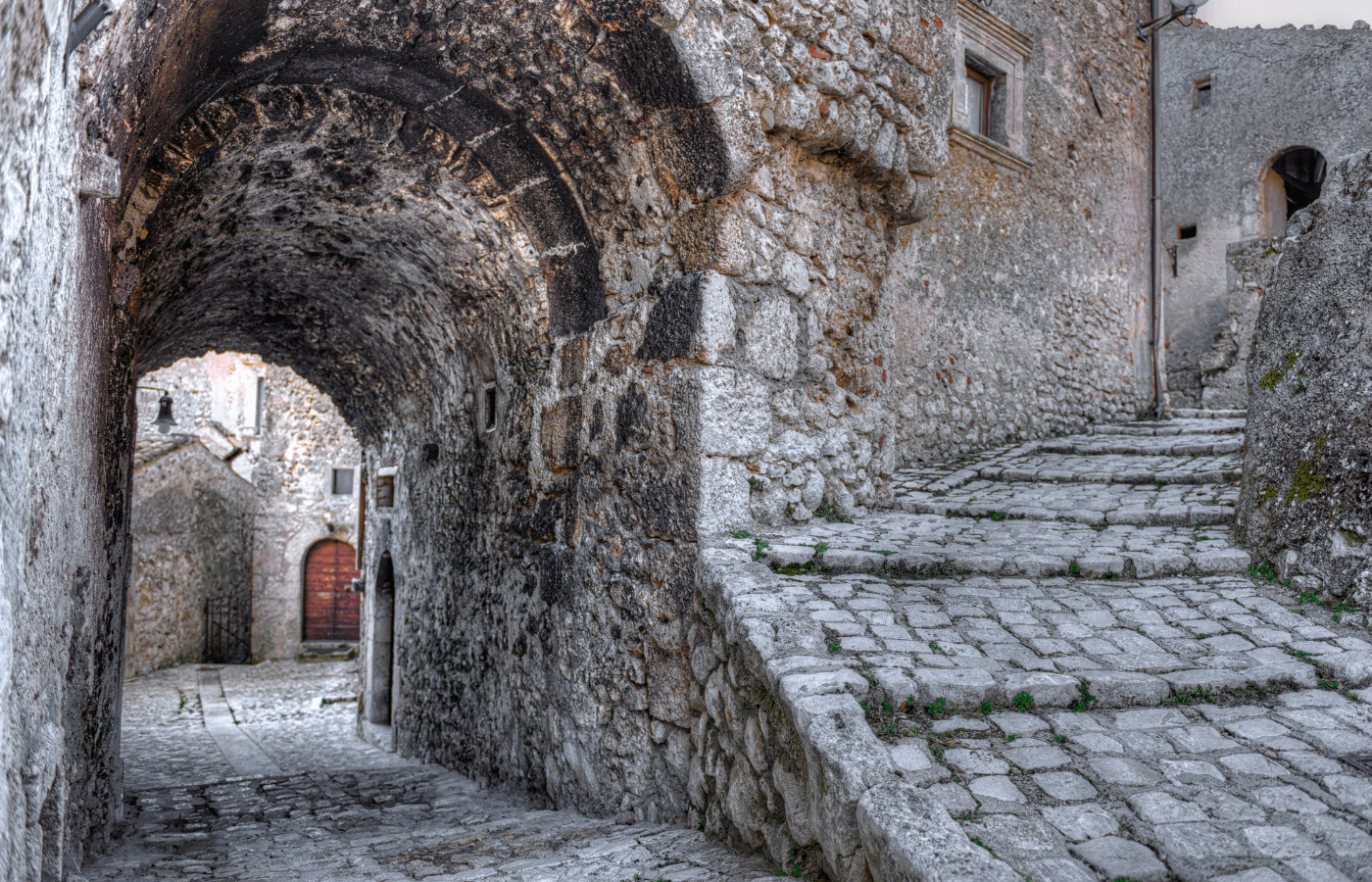
15 Must-See Medieval Villages in Abruzzo
1. Palena (Chieti)
History & Character: Nestled in the Majella mountains, Palena is a quiet village surrounded by thick forests and steep cliffs. The ancient Benedictine monastery and the ruins of the Ducal Castle hint at its strategic medieval past.
What Makes It Unique: Palena is home to a bear museum dedicated to the Marsican brown bear and lies within the Majella National Park.
Where to Eat: Casa Dell’Orso
🛌 Where to Stay: B&B Casa Antonetti (9.5 Rating)
How to Get There: A scenic drive from Pescara or Sulmona, about 1.5 hours by car.
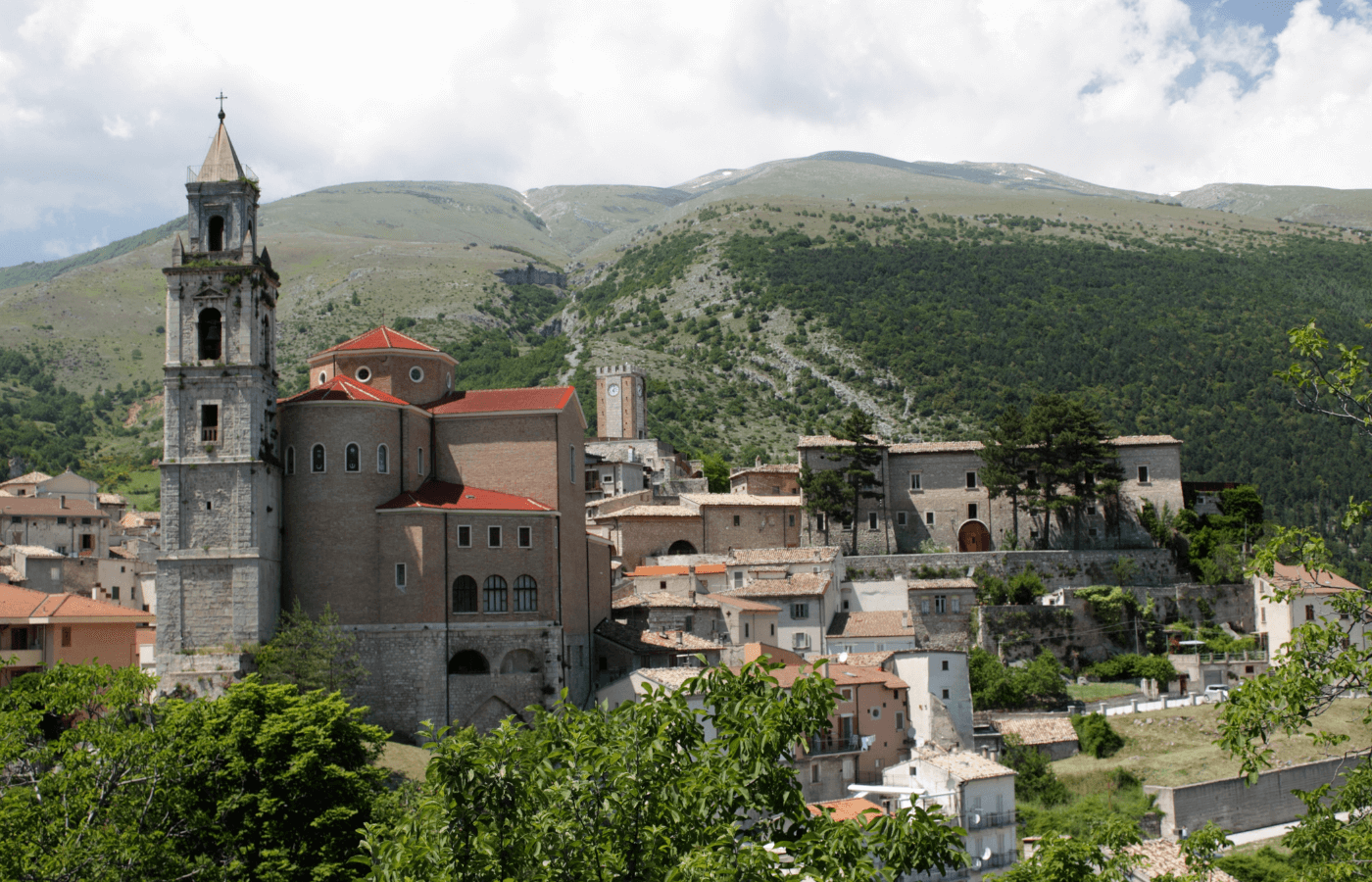
2. Anversa degli Abruzzi (L’Aquila)
History & Character: Perched dramatically above the Sagittario Gorge, this tiny village was a feudal stronghold with roots in the Roman era.
What Makes It Unique: Anversa is famous for its views of the gorge, the medieval castle, and its proximity to the Gole del Sagittario nature reserve.
Where to Eat: Ristorante Pizzeria Le Gole
🛌 Where to Stay: La Porta dei Parchi
How to Get There: Best accessed from Sulmona, about 30 minutes by car. By rail, take a train from Rome to Sulmona, then a bus to Anversa degli Abruzzi. The journey takes approximately 3.5 hours.
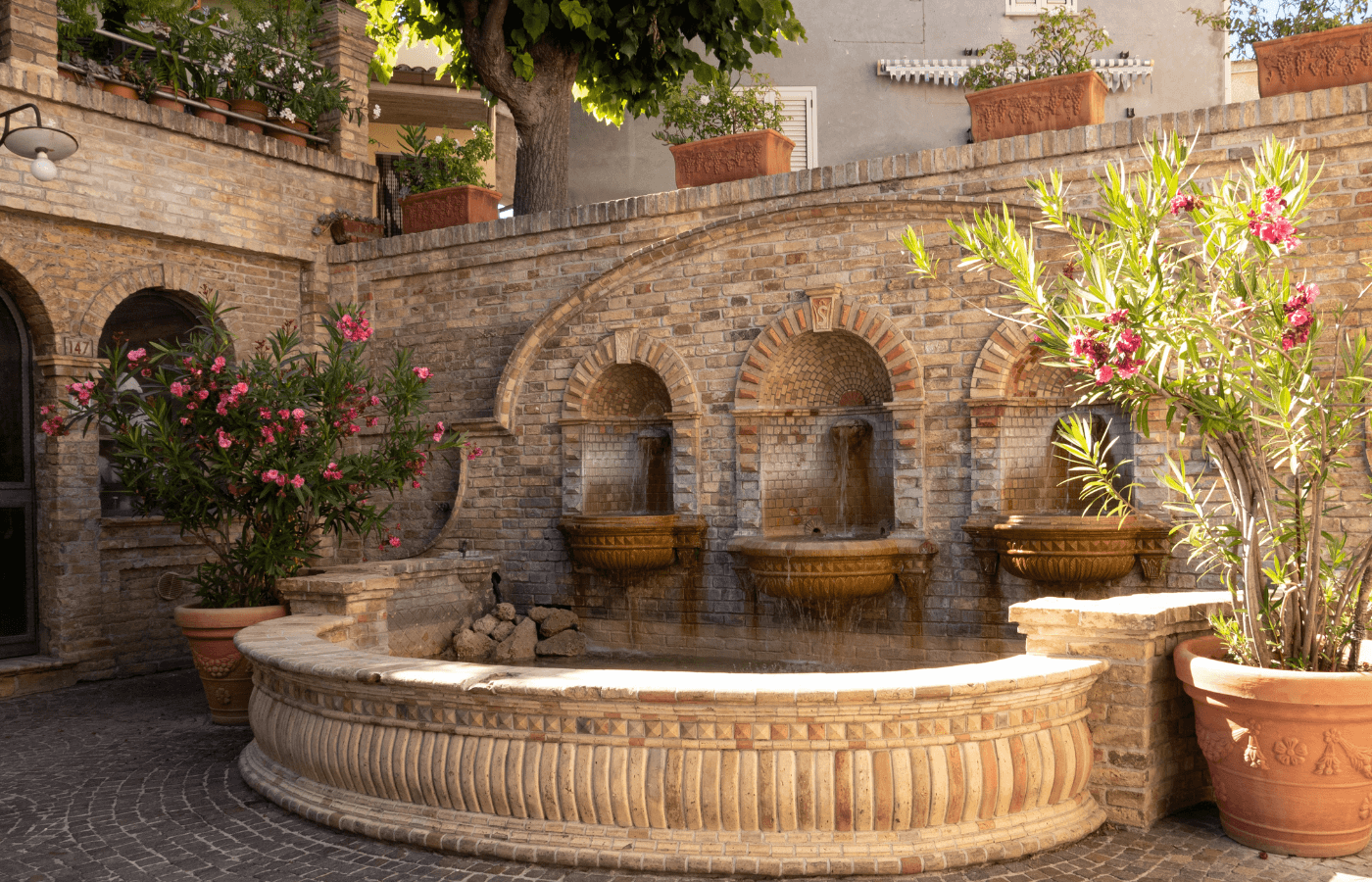
3. Campli (Teramo)
History & Character: This charming village is known for its sacred stairs and ancient churches, offering a deep dive into religious history.
What Makes It Unique: The 14th-century Sacred Steps, which pilgrims ascend on their knees, and the National Archaeological Museum.
Where to Eat: Ristorante Pizzeria Tunnel
🛌 Where to Stay: B&B Margarita D’Austria
How to Get There: Easily reached from Teramo, about 20 minutes by car. Reach Teramo via regional buses or trains. From Teramo, TUA Abruzzo operates direct buses to Campli.
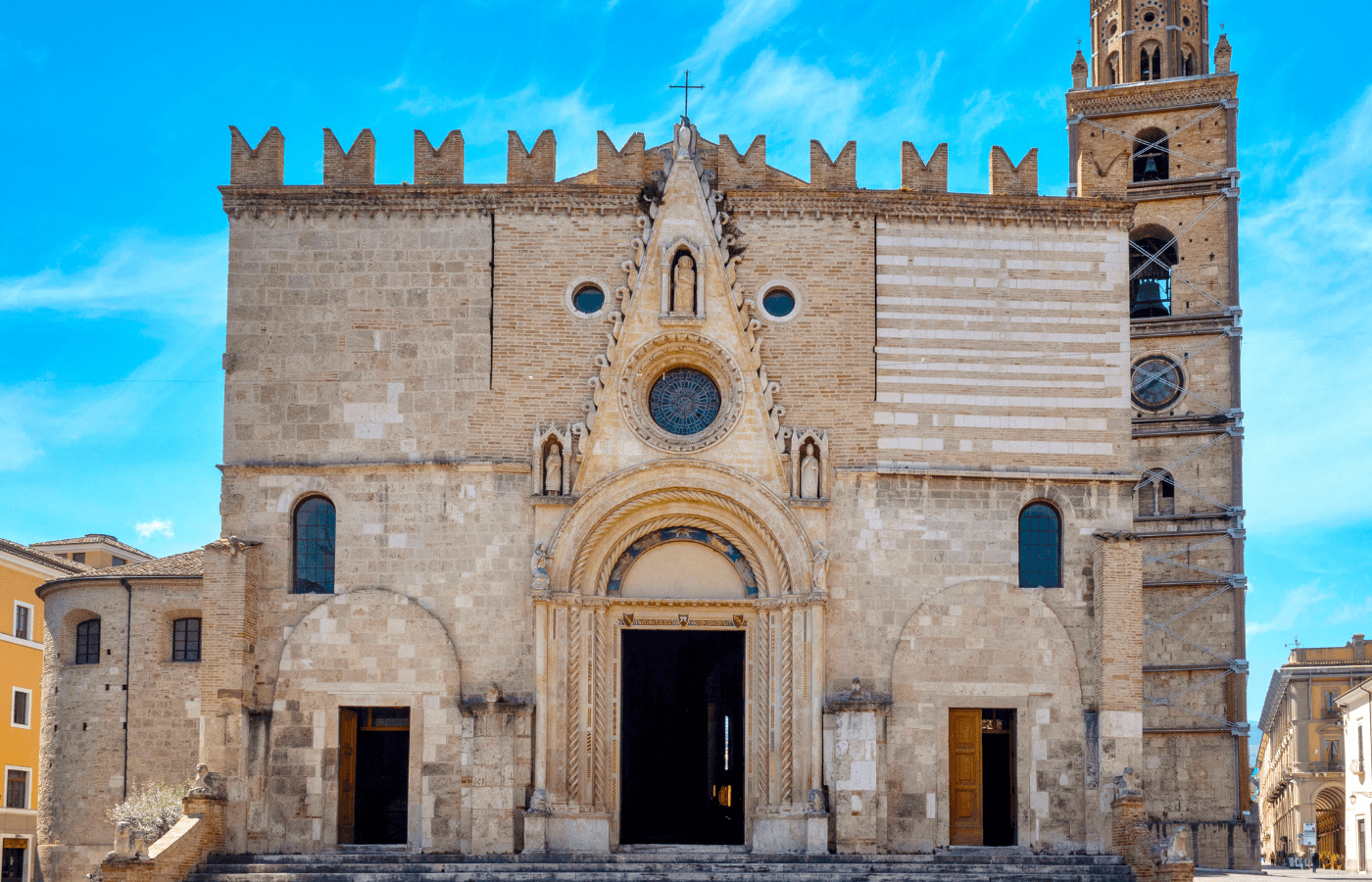
4. Casoli (Chieti)
History & Character: Casoli is a blend of medieval and Renaissance architecture, with the Castello Ducale dominating the skyline.
What Makes It Unique: A tranquil spot with panoramic views over the Aventino River valley and a rich literary history.
Where to Eat: Lu Pennese
🛌 Where to Stay: Agriturismo L’Uliveto
How to Get There: Accessible by car from Pescara in about 1 hour.
Public transportation options are limited; consider checking local bus services for availability.
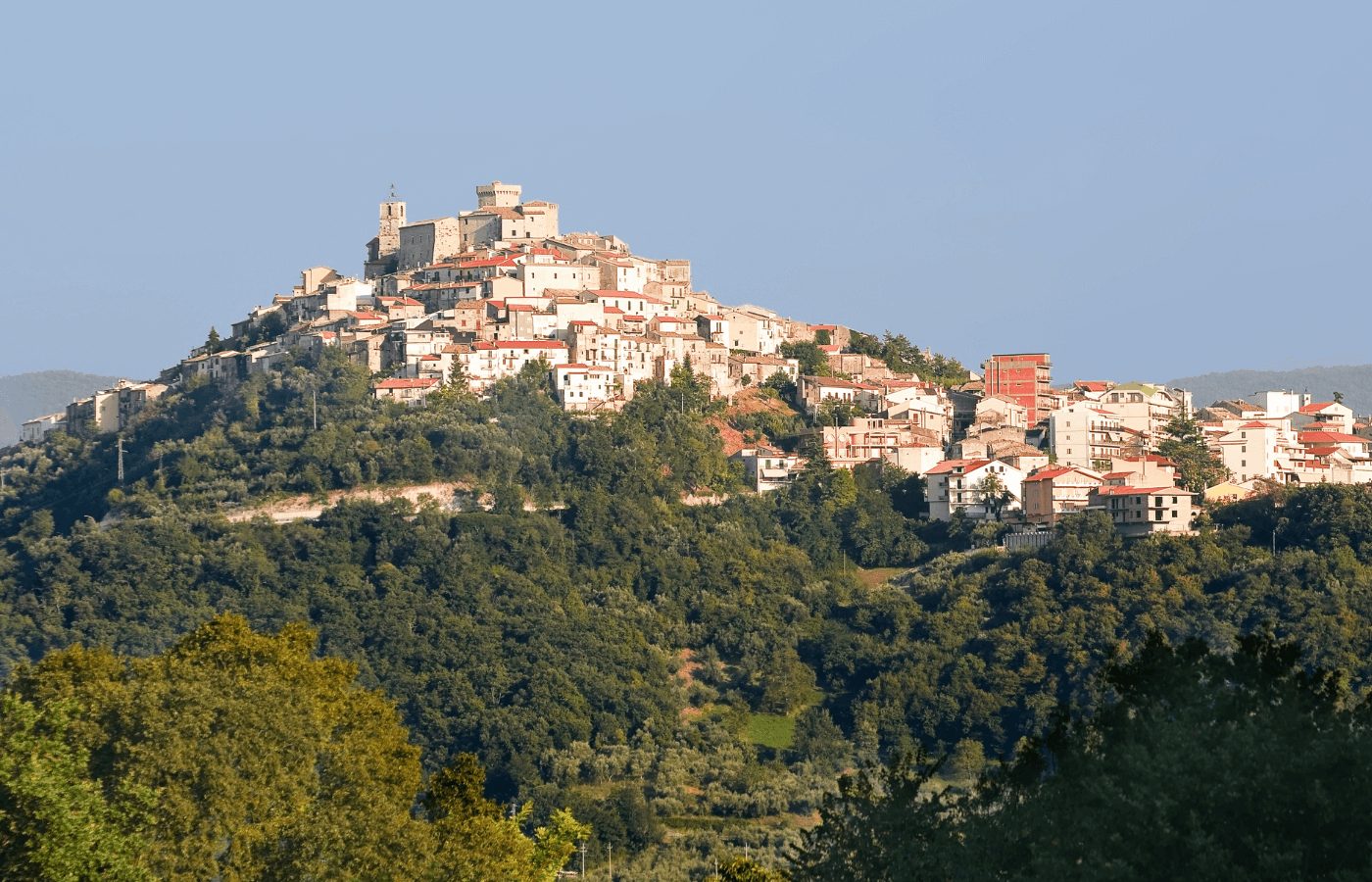
5. Castel del Monte (L’Aquila)
History & Character: Once a stronghold against Saracen invasions, Castel del Monte is known for its stone houses and narrow lanes.
What Makes It Unique: Popular among filmmakers, it served as a location in “The American” starring George Clooney.
Where to Eat: Osteria del Lupo
🛌 Where to Stay: Destasù Bed & Wellness (9.5 Rating)
How to Get There: From L’Aquila, it’s a 45-minute drive.
Public transportation options are limited; check local bus schedules for potential routes.
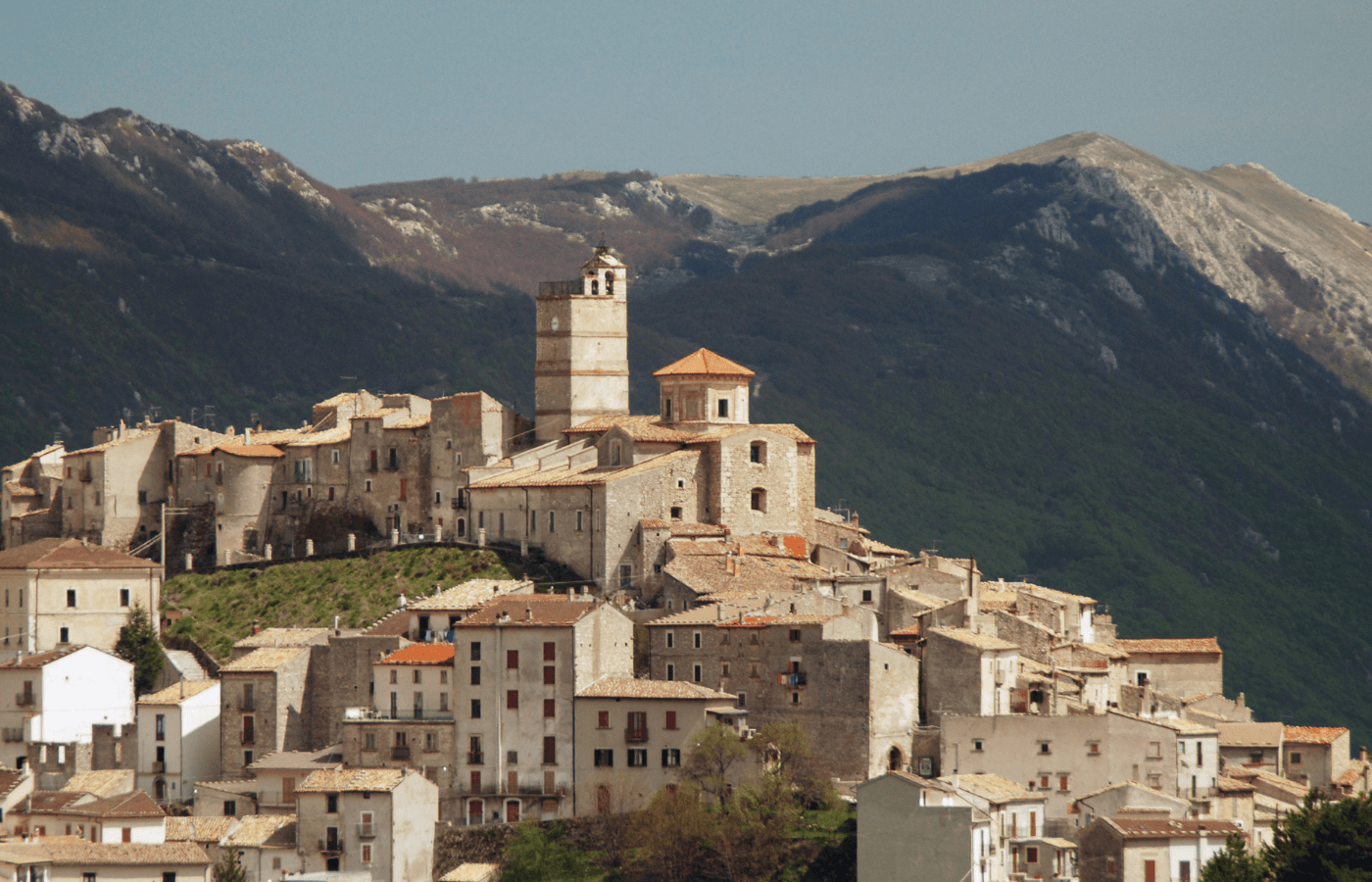
6. Castelli (Teramo)
History & Character: This artisan village has been producing hand-painted ceramics since the Renaissance.
What Makes It Unique: Visit the Museum of Ceramics and browse the many local workshops for unique souvenirs.
Where to Eat: Pensione Iolanda
Where to Stay: Hotel Art’è
How to Get There: From Teramo, take a taxi to Castelli, then a train to Pescara Centrale. The journey takes approximately 1 hour and 45 minutes.
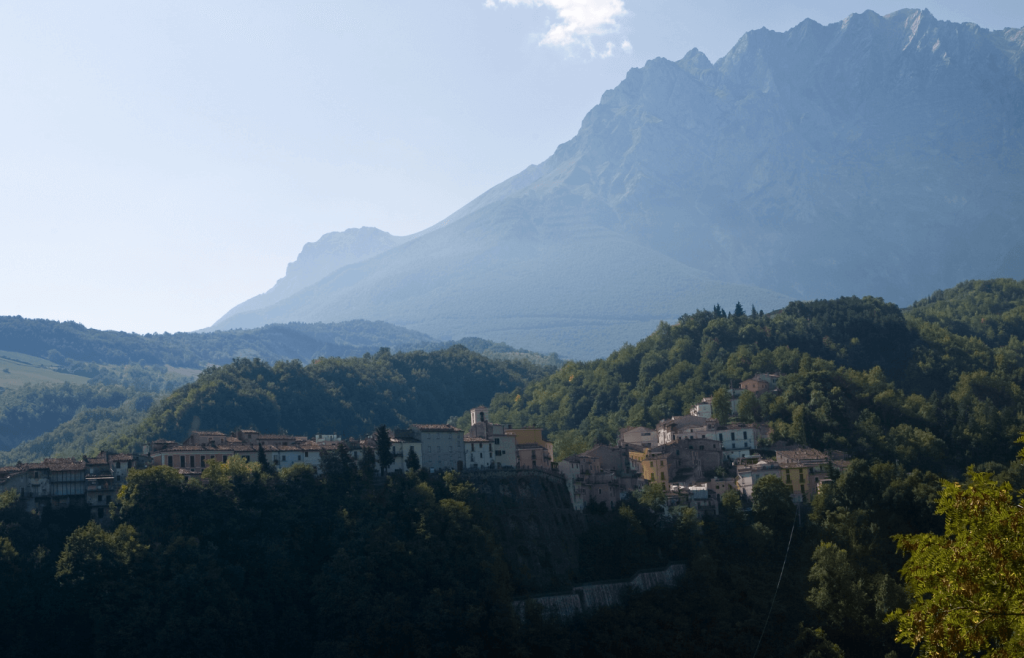
7. Città Sant’Angelo (Pescara)
History & Character: A lively hilltop town with sweeping views of the Adriatic coast.
What Makes It Unique: Known for its balance of rural charm and modern amenities, it’s close to the coast but feels a world away.
Where to Eat: Ristorante Margazzillo
Where to Stay: Grand Palazzo Apartment
How to Get There: 20 minutes from Pescara by car.
Accessible by TUA buses from Pescara. The journey takes about 20 minutes.
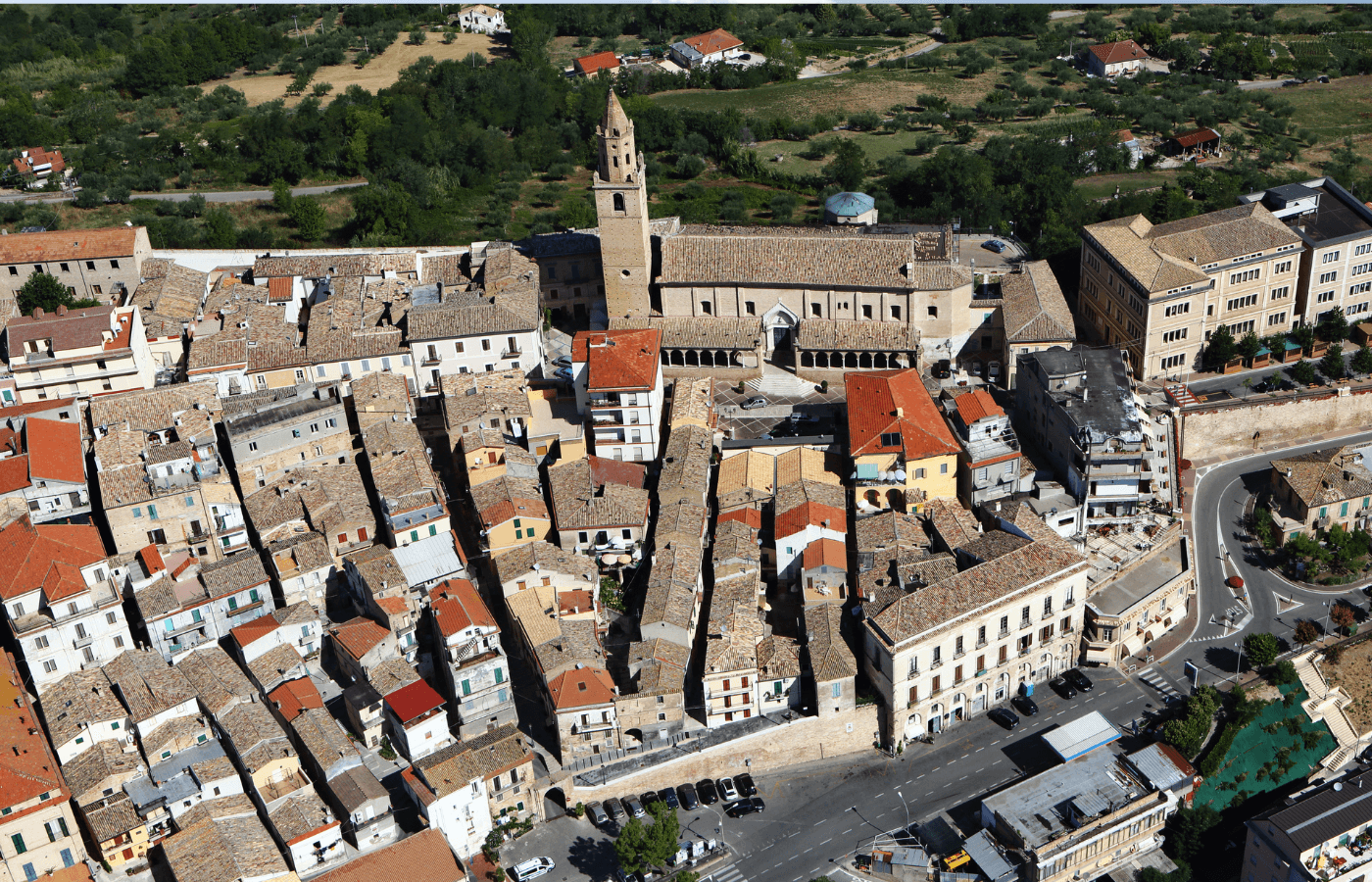
8. Civitella del Tronto (Teramo)
History & Character: Famous for its Bourbon fortress, the largest of its kind in Italy.
What Makes It Unique: A living museum of military history with jaw-dropping views of the Gran Sasso mountains.
Where to Eat: Ristorante Colle Santamaria
How to Get There: 30 minutes from Teramo by car.
From Teramo, take a TUA bus to Civitella del Tronto. The journey takes approximately 30 minutes.
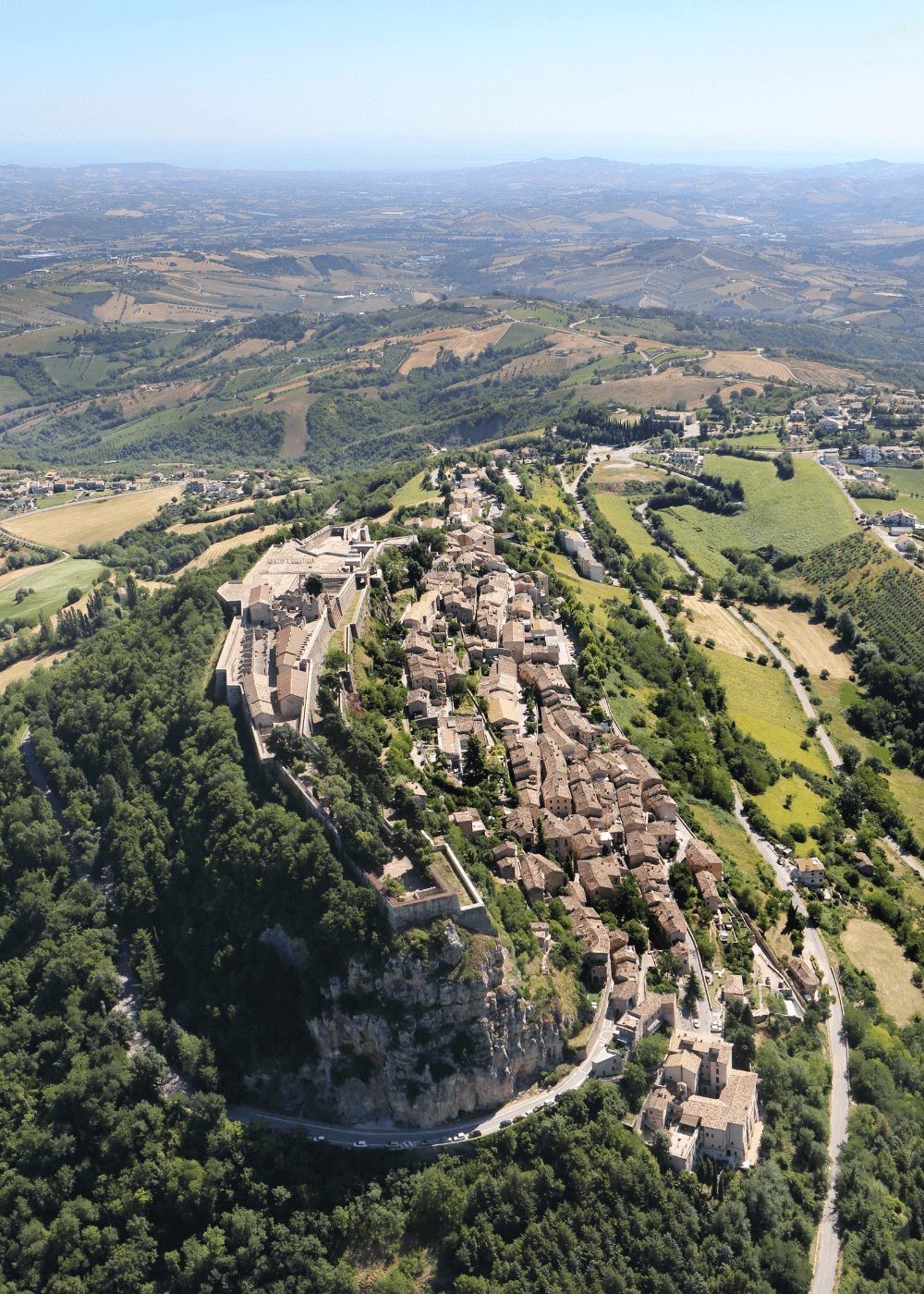
9. Guardiagrele (Chieti)
History & Character: Referred to as the “terrace of Abruzzo” thanks to its panoramic views.
What Makes It Unique: Artisans here craft traditional metalwork and jewelry, and the town has a rich gastronomic tradition.
Where to Eat: Villa Maiella
🛌 Where to Stay: B&B Casa Milà (9.2 Rating)
How to Get There: 1 hour from Pescara.
From Rome, take a bus to Chieti, then transfer to a local bus to Guardiagrele. The total journey takes about 3 hours.
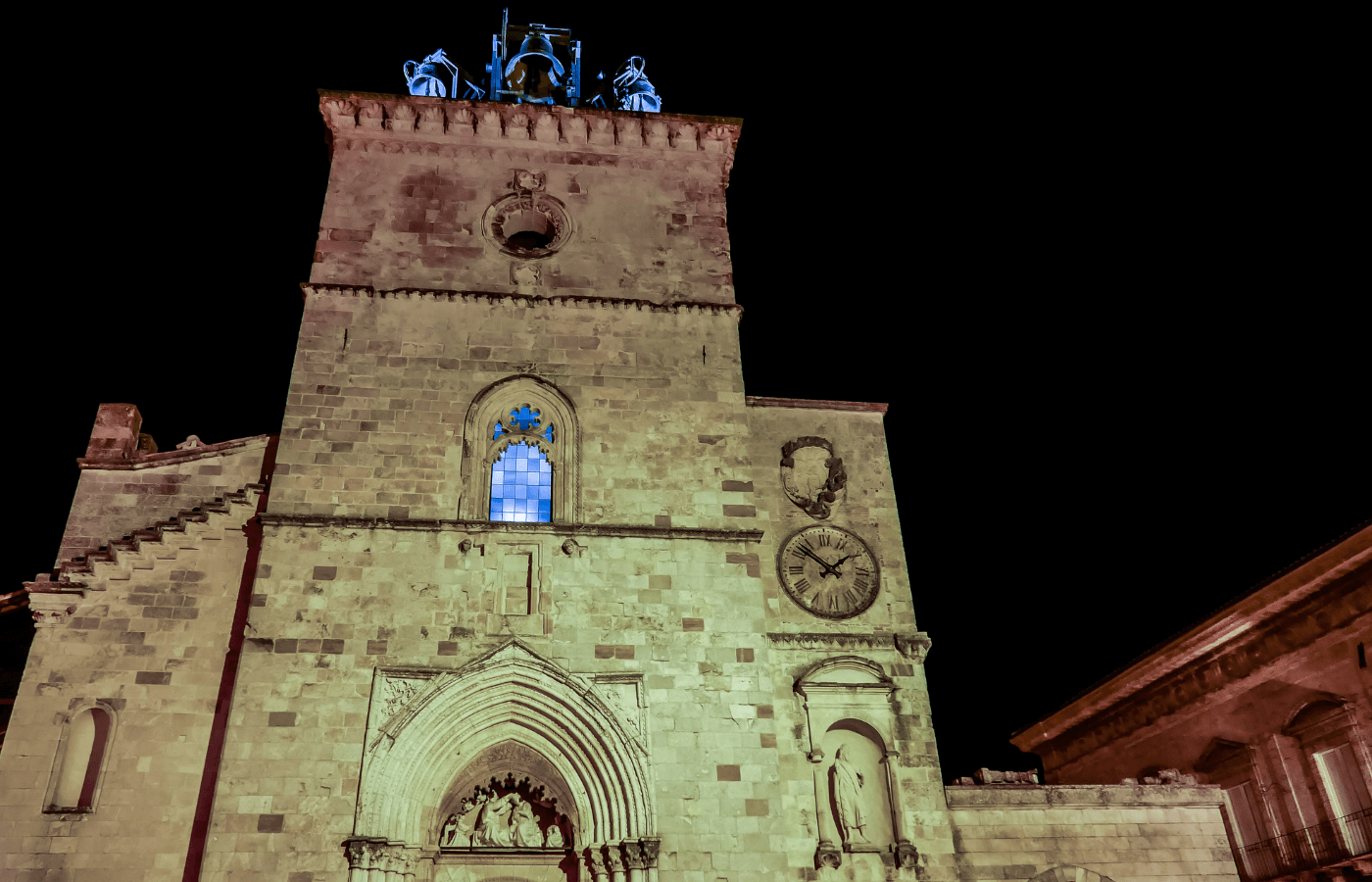
10. Navelli (L’Aquila)
History & Character: A saffron-producing village, Navelli’s stone streets and baroque buildings feel untouched by time.
What Makes It Unique: Come during the harvest season to see vibrant purple crocus fields in bloom.
Where to Eat: Ristorante Antica Taverna di Navelli
🛌 Where to Stay: Abruzzo Segreto (9.6 Rating)
How to Get There: 30 minutes from L’Aquila by car.
TUA buses serve Navelli from L’Aquila. The nearest bus station is a 2-minute walk from the village center.
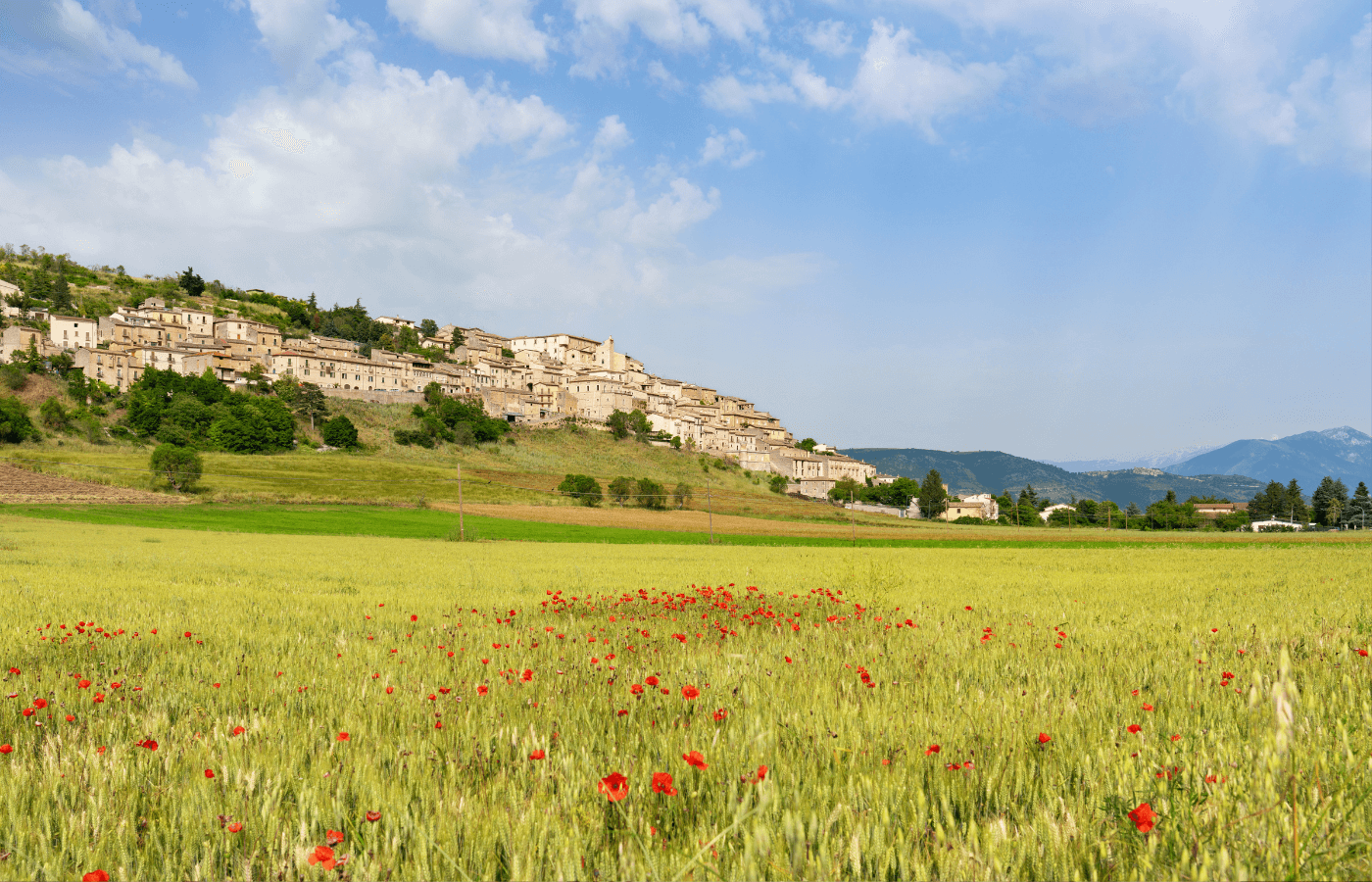
11. Opi (L’Aquila)
History & Character: In the heart of the Abruzzo National Park, Opi is a nature-lover’s dream.
What Makes It Unique: Ideal for hiking, wildlife watching, and enjoying cool mountain air.
Where to Eat: Il Duca degli Abruzzi
🛌 Where to Stay: Hotel La Pieja
How to Get There: 2 hours from Pescara by car.
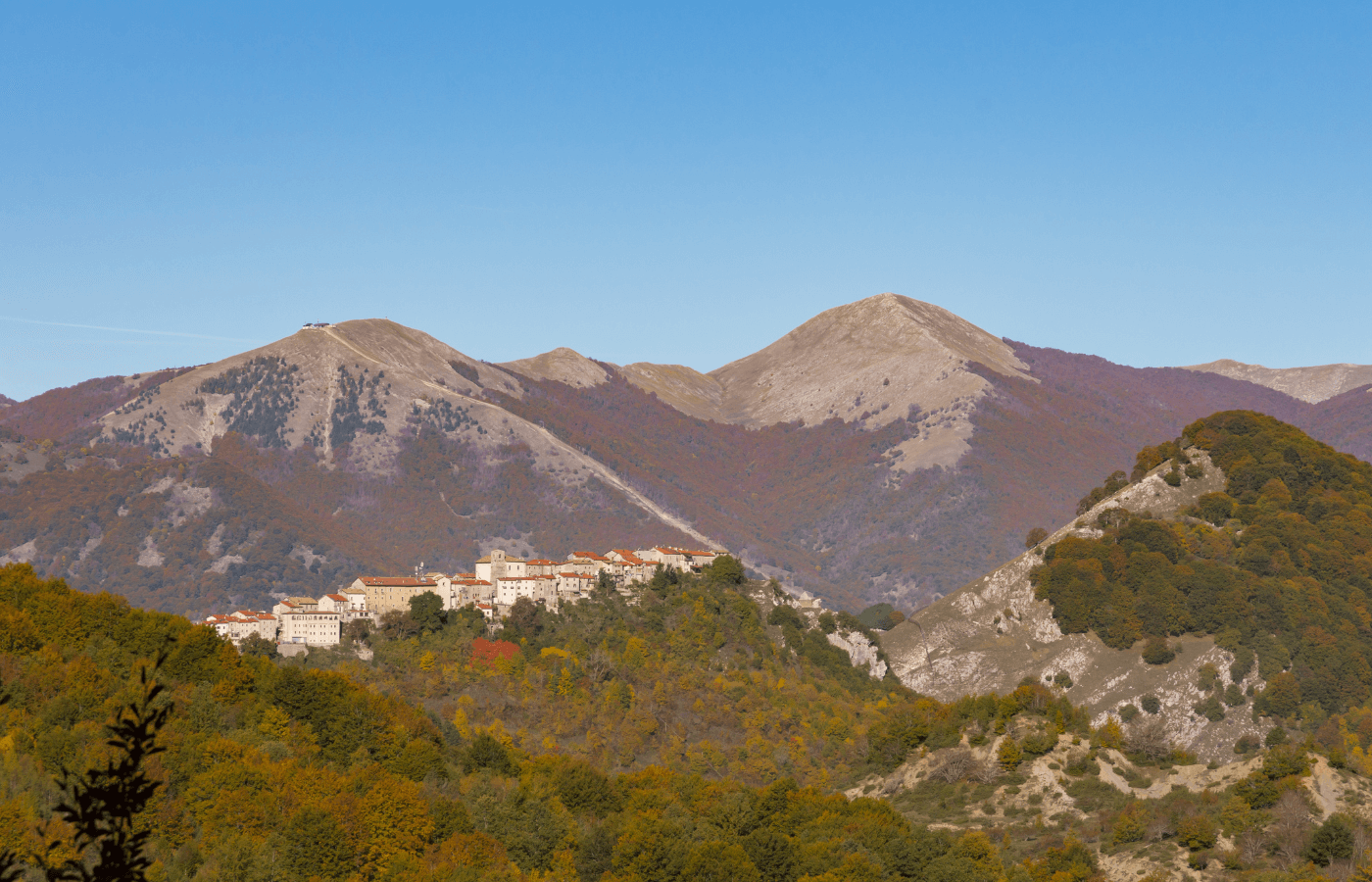
12. Pacentro (L’Aquila)
History & Character: With its medieval towers and perfectly preserved old town, Pacentro is postcard-perfect.
What Makes It Unique: Birthplace of Madonna’s ancestors and part of the Majella National Park.
Where to Eat: Taverna de li Caldora
🛌 Where to Stay: Rocca Lorenizo
How to Get There: 20 minutes from Sulmona by car.
From Sulmona, take a train to Pacentro. The journey takes about 20 minutes.
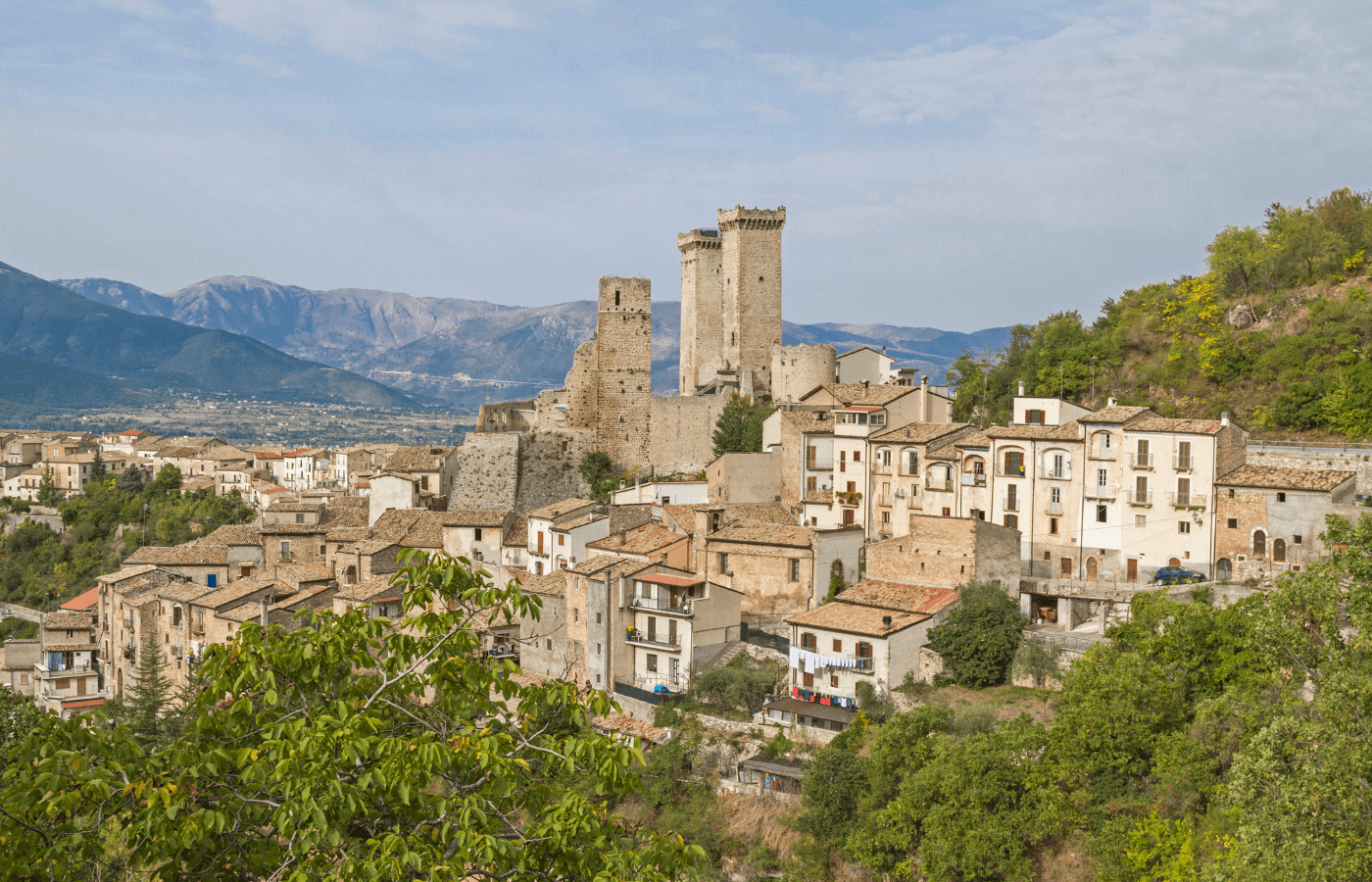
13. Scanno (L’Aquila)
History & Character: A photogenic lakeside village, famous for its traditional dress and heart-shaped lake.
What Makes It Unique: A favorite of photographers like Henri Cartier-Bresson.
Where to Eat: La Baita
🛌 Where to Stay: Agriturismo Le Prata (9.5 Rating)
How to Get There: About 1 hour from Sulmona by car.
From Sulmona, take a bus to Scanno. The journey takes approximately 1 hour.
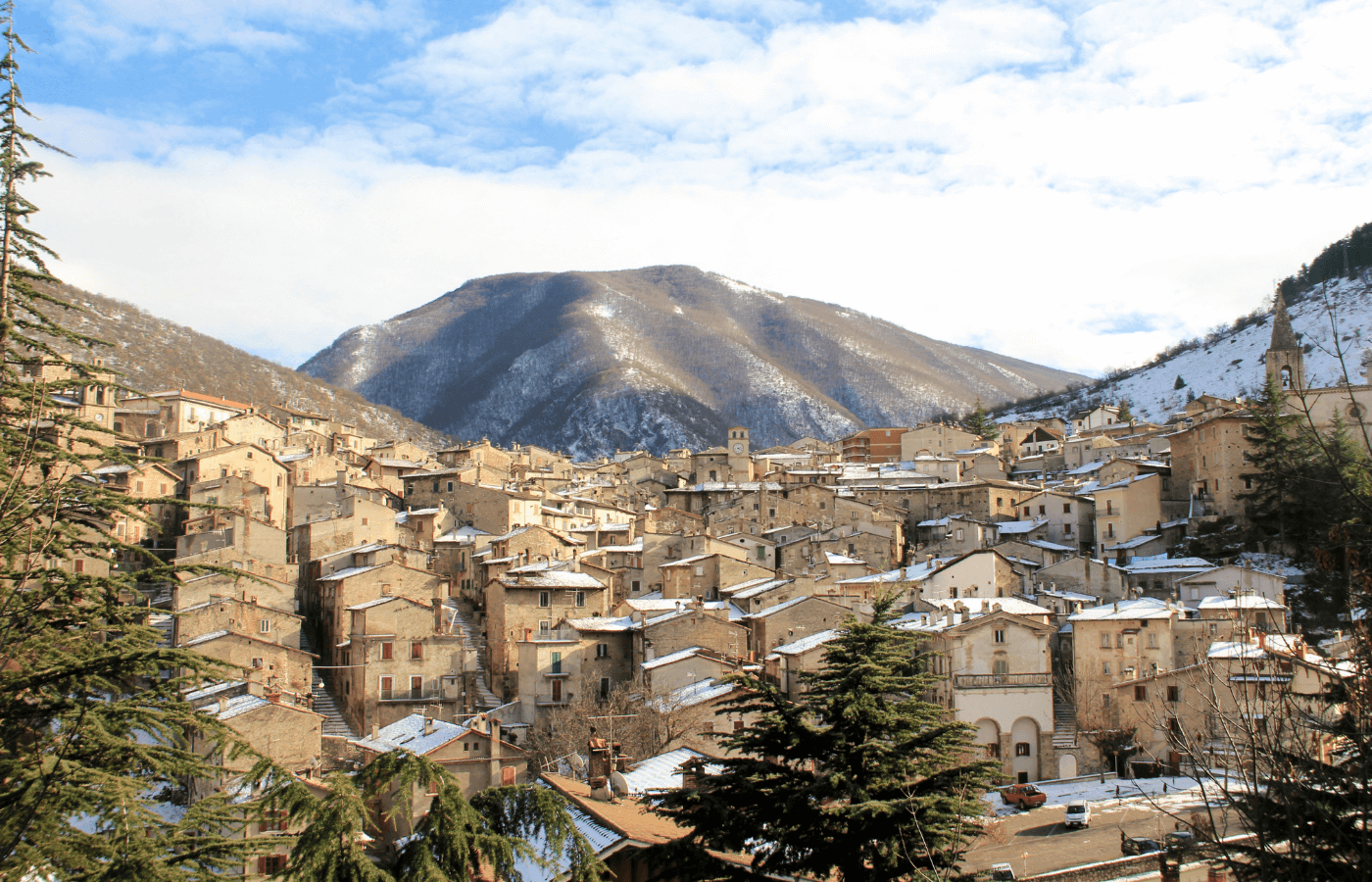
14. Pescocostanzo (L’Aquila)
History & Character: A snow-kissed town near Roccaraso, perfect for winter lovers.
What Makes It Unique: Rich in Renaissance architecture and artisanal lace-making.
Where to Eat: Ristorante da Paolino
🛌 Where to Stay: Garnì B&B La Rua-Pescocostanzo
How to Get There: 40 minutes from Sulmona by car.
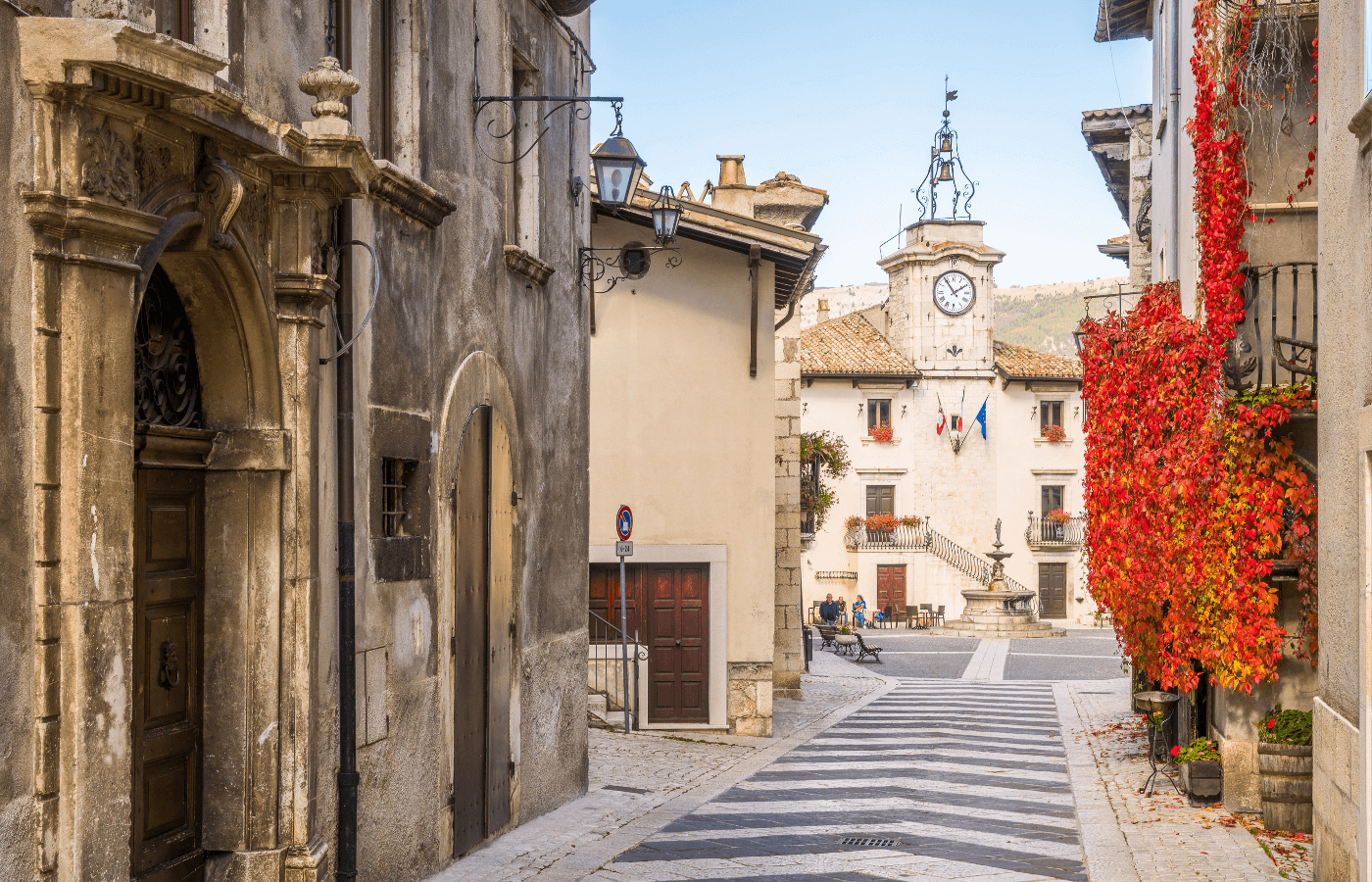
15. Santo Stefano di Sessanio (L’Aquila)
History & Character: A lovingly restored medieval village, now a model for sustainable tourism.
What Makes It Unique: Home to Sextantio, a famous Albergo Diffuso (scattered hotel).
Where to Eat: La Locanda sul Lago
🛌 Where to Stay: Sextantio Albergo Diffuso (9.0 Rating)
How to Get There: 40 minutes from L’Aquila by car or bus.
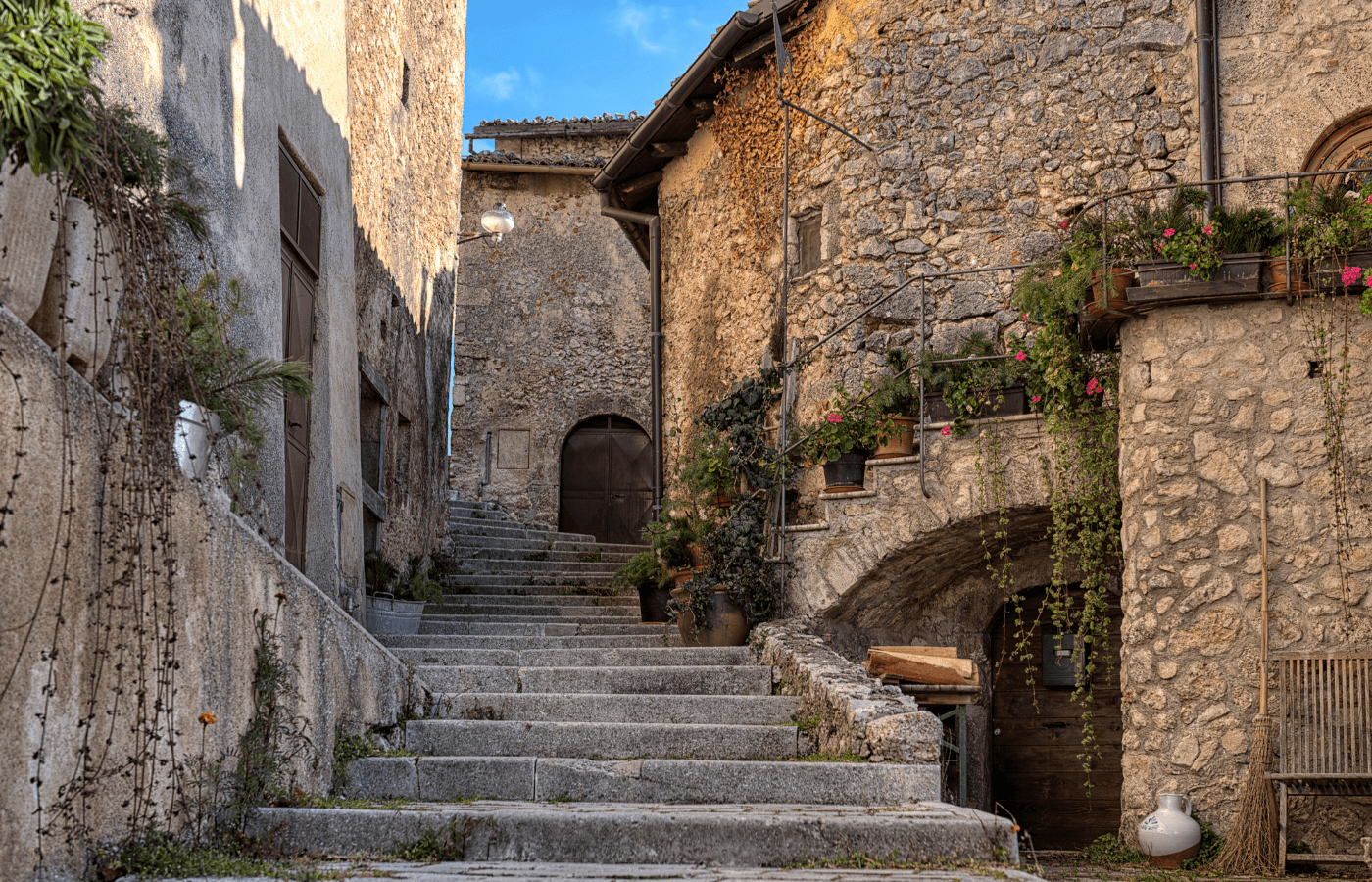
FAQ: Visiting Medieval Villages in Abruzzo
What are the best medieval villages in Abruzzo?
Some of the most charming include Scanno, Castel del Monte, Civitella del Tronto, and Santo Stefano di Sessanio. Each offers a unique slice of Abruzzo’s rich history and culture.
Are these villages easy to reach?
Yes, most are accessible by car and within 1-2 hours of major cities like Pescara or L’Aquila. A rental car is highly recommended.
When is the best time to visit medieval villages in Abruzzo?
Spring and fall offer pleasant weather and fewer crowds, making them ideal for exploring.
Can I stay overnight in these villages?
Absolutely. Many offer cozy inns and charming B&Bs that let you soak up the atmosphere after the day-trippers leave.
What makes Abruzzo’s villages different from those in Tuscany?
Authenticity. These villages feel lived-in, not curated for tourists. You’ll find locals chatting in the piazza and barely a souvenir shop in sight.
Visiting the medieval villages in Abruzzo is like opening a door to another era. With breathtaking views, timeless traditions, and a warm welcome waiting in every piazza, these hidden gems offer a truly unforgettable escape.

